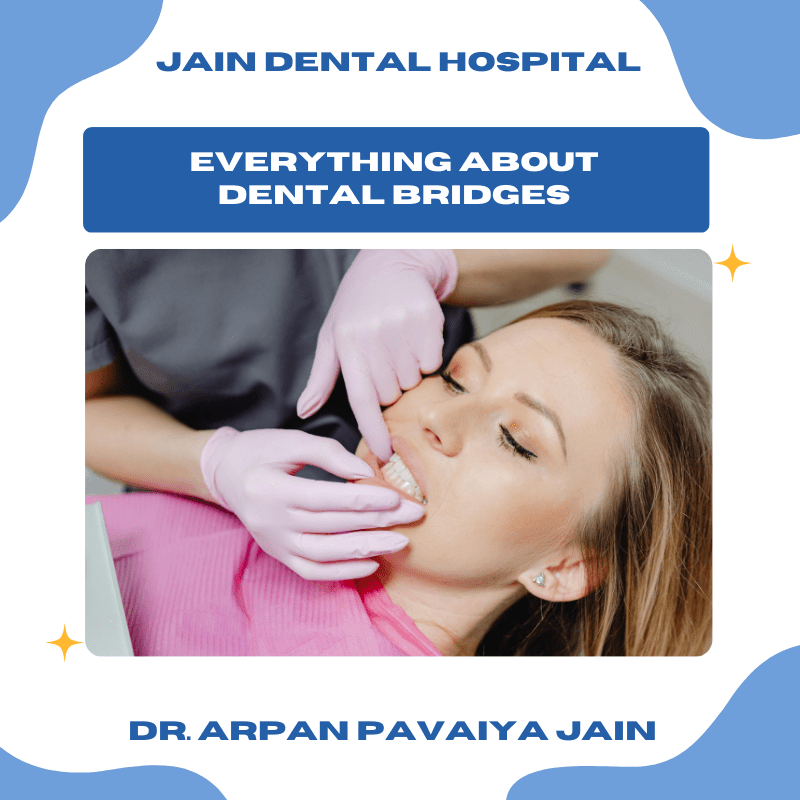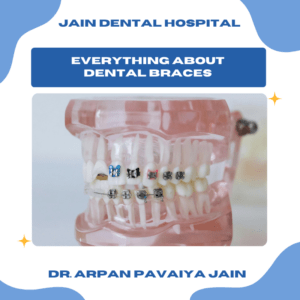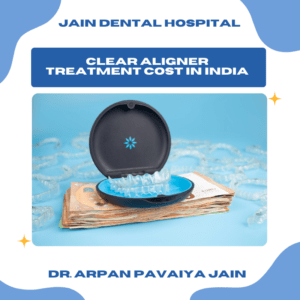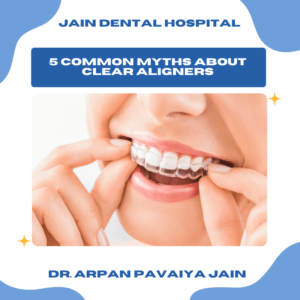Dental Bridges: A Comprehensive Guide to Types, Procedures, and Care
Dental Bridges: Types, Benefits, and How They Transform Your Smile
Missing teeth can affect much more than just your confidence. They impact the way you chew and speak and could even cause other teeth to shift out of position. The solution? Dental bridges—a trusted dental restoration that can fill in those gaps and restore function, aesthetics, and confidence to your smile.
This blog will walk you through everything you need to know about dental bridges, including the types, benefits, potential drawbacks, and what to expect from the procedure. By the end of this article, you’ll be better equipped to decide if this treatment is the right fit for you.
What Are Dental Bridges?
Definition and Purpose
A dental bridge is a permanent dental restoration designed to replace missing teeth by literally “bridging the gap” left by the missing tooth or teeth. The bridge consists of a pontic (the false tooth) and abutments (the supporting structures that anchor the bridge). These abutments could be your natural teeth or dental implants.
The primary goal of a dental bridge is to restore functionality—helping you chew and speak properly—while also enhancing the aesthetic appeal of your smile.
Dental Bridges: Advantages and Disadvantages
| Characteristics for a Comprehensive view | |
| Aspect | Dental Bridges |
| Procedure | Involves shaving down adjacent teeth and placing a bridge to fill the gap. |
| Tooth Damage | Requires modification of healthy adjacent teeth for support. |
| Treatment Period | Quick (Usually 1-2 visits) |
| Treatment Cost | Relatively low initial cost, but may require replacements every 5-10 years. |
| Masticatory Force | Reduced chewing strength compared to natural teeth. |
| Lifespan | Typically 5-15 years, depending on care. |
| Maintenance | Requires regular cleaning and flossing, with some possible maintenance over time. |
| Aesthetic Appearance | Looks natural, but may need periodic replacements. |
| Comfort | Comfortable after the initial adjustment period. |
| Risk of Decay | Higher risk of decay in adjacent teeth due to required shaving. |
| Suitability | Ideal for patients who cannot undergo implant surgery or prefer a less invasive option. |
| Advantages | Less invasive than implants, faster procedure, and more affordable. |
| Disadvantages | Requires altering healthy teeth, less durable than implants, and may require replacement after several years. |
Key Components of a Dental Bridge
Pontic
- The artificial tooth filling the gap
Abutments
- The natural teeth or implants supporting the bridge
Types of Dental Bridges
Depending on your dental condition, health, and aesthetic needs, dentists typically recommend the following four bridge types:
1) Traditional Dental Bridge
- The most common type of dental bridge
- Relies on dental crowns fixed to the healthy teeth on either side of the gap
- Suitable when there are natural teeth on both sides of the missing tooth
2) Cantilever Dental Bridge
- Similar to a traditional bridge but supported by just one abutment tooth.
- Used when there’s only one tooth available for anchoring the bridge.
- Not as sturdy as a traditional bridge
3) Maryland Dental Bridge
- Also known as a resin-bonded bridge.
- Uses a metal or porcelain framework bonded to the back of the adjacent teeth.
- Typically used for missing front teeth as it’s not strong enough to handle heavy chewing forces.
4) Implant-Supported Bridge
- Supported by dental implants instead of natural teeth.
- The most durable and stable but involves a more invasive procedure.
- Ideal for replacing a row of multiple missing teeth
How Are Dental Bridges Installed?
Getting a dental bridge typically involves several steps carried out over multiple appointments:
1. Consultation and Planning
Your dentist examines your oral health through physical inspections and X-rays to determine if a dental bridge is right for you. They’ll also discuss the best type of bridge based on your specific needs.
2. Preparation of Supporting Teeth
If you’re getting a traditional or cantilever bridge, the adjacent teeth on either side of the gap (abutments) will be reshaped and trimmed to fit dental crowns. This step ensures the bridge sits securely without discomfort.
3. Impressions and Temporary Bridge
Dental impressions are taken to create a custom-fitted bridge. While waiting for your permanent bridge to be crafted, a temporary bridge is installed to protect the area.
4. Final Placement
Once the permanent bridge is ready, it is bonded securely in place. Your dentist will make small adjustments to ensure the fit feels comfortable and natural.
For implant-supported bridges, additional steps like implant surgery are required, which can extend the timeline.
Why Choose a Dental Bridge?
Dental bridges offer several practical and aesthetic benefits:
1. Restores Functionality
Enjoy chewing, speaking, and smiling confidently again. Dental bridges help you regain proper oral functionality.
2. Improves Appearance
Bridges are custom-designed to blend seamlessly with your natural teeth, giving your smile a polished, natural look.
3. Prevents Shifting Teeth
A bridge keeps adjacent teeth properly aligned, preventing further dental problems like crowding or bite misalignment.
4. Cost-Effective Solution
Compared to dental implants, bridges generally cost less upfront and can still provide long-lasting results with proper care.
5. Long-Lasting Durability
With good hygiene practices, a dental bridge can last anywhere from 5 to 15 years—or even longer.
Understanding the Drawbacks
While dental bridges can work wonders for many patients, they do come with certain considerations:
1. Impact on Adjacent Teeth
Traditional and cantilever bridges require reshaping healthy teeth, which could weaken them over time.
2. Risk of Decay or Gum Disease
Improper cleaning around the bridge can lead to cavities or gum issues beneath the bridge.
3. Potential for Discomfort
Some patients experience sensitivity or an adjustment period after their bridge placement.
4. Bridge Failure
If surrounding teeth or support structures are damaged, the bridge may loosen or fail.
5. Not Suitable for Everyone
Patients with insufficient healthy teeth or untreated gum disease may not be ideal candidates for bridges.
Exploring Alternatives
Not sure a bridge is right for you? There are alternative solutions to consider:
Dental Implants
- A long-term and durable option, though typically more expensive and invasive.
Partial Dentures
- Removable and cost-effective, but some find them less convenient.
No Treatment
- If the missing tooth doesn’t affect functionality, leaving it untreated could be an option (though not recommended for aesthetic or alignment reasons).
- Each option comes with its pros and cons, so consulting with your dentist is crucial.
How to Care for Dental Bridges
Proper care can extend the life of your bridge and protect your oral health. Here’s how to maintain your bridge:
1) Brush Twice Daily
- Use fluoride toothpaste and a soft-bristle brush to clean along the bridge and gum line.
2) Floss Regularly
- Use floss threaders to clean under the bridge effectively.
3) Avoid Hard or Sticky Foods
- Chewing ice or hard candies can damage the bridge and adjacent teeth.
4) Schedule Regular Dental Check-Ups
- Routine professional cleaning and inspections are critical for long-term success.
5) Watch Your Diet
- Minimize foods and drinks that can cause plaque buildup.
By following these simple steps, your bridge can remain functional and gorgeous for years to come.
Conclusion
Making the Right Choice for Your Smile
Dental bridges can be life-changing for anyone dealing with missing teeth. Whether restoring daily functionality or building back your confidence, they remain a tried-and-true solution.
However, every smile is unique, and consulting with your dentist is key to finding the best restoration option for you. A dental bridge is more than just a procedural fix—it’s an investment in your health, well-being, and happiness.
Still unsure? Schedule a consultation with your dentist today to explore the best dental bridge options tailored to your specific goals.
Your Smile Deserves the Best - Book a consultation with the top dental doctor in Indirapuram & Ghaziabad!
A healthy, confident smile can transform your life. Don’t settle for anything less than the best. If you’re searching for the best dental clinic in Indirapuram Ghaziabad, look no further than Jain Dental Hospital.
Take the first step toward a brighter smile. Book your appointment today and experience the difference! Call us at +91-9582535204 or visit our website at www.jaindentistdelhi.com.

Dr. Arpan Pavaiya Jain, Director of Jain Dental Hospital, Indirapuram, Ghaziabad is a renowned Prosthodontist and Implantologist with over 20 years of expertise in advanced dentistry. A graduate of the prestigious King George’s Medical College Lucknow, he has performed more than 20,000 successful dental implant procedures. Dr. Jain leads a team of skilled professionals, offering state-of-the-art treatments in dental implants, clear aligners, cosmetic dentistry, orthodontics, and more. Known for his personalized care and commitment to excellence, he has earned a reputation as a trusted dental expert in Indirapuram, Ghaziabad.





